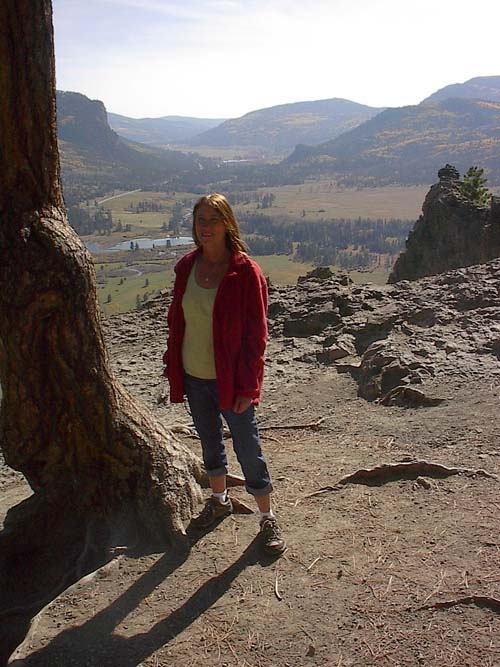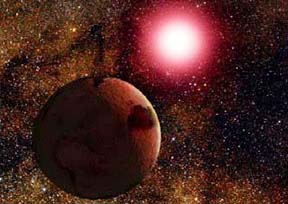DISC-ussion
edited by Ann Ulrich Miller
© 2017 (all rights reserved)
An article from the August 2017 issue of
THE STAR BEACON.
Whose Spaceships Are Flying in Orbit Around Earth?
EDITOR'S NOTE: The following report comes from Filer's Files #28-2017,
dated July 9, 2017.
There are
huge craft in orbit around the Earth. Governments of the Earth deny their
ability to operate anti-gravity craft. Assuming they are telling the truth,
nations of the Earth only have the International Space Station in orbit. The
Obama administration stopped the Shuttles flying and is spending a billion
dollars to fly US astronauts aboard Russian rockets to the ISS and purchasing
Russian rocket engines. So a billion-dollar bill infers that these orbiting
craft do not belong to the US.

These huge ships could be an interstellar migration of aliens who have an
interest in watching humans and the plant and animal life on this planet. They
could be here to help or to take advantage of our tribal warfare. There is
evidence of mining going on under the ocean and on the moon. Present day
telescopes, radars, space fence can pick up the large craft circling Earth. The
ISS regularly takes video and photographs of objects in space. David Wilcock,
Corey Goode, and William Tompkins claim that at least some of these ships belong
to the United States.
For more than years now, John Lenard Walson has shared his uniquely close-up
footage and images of our Moon and other celestial bodies in orbit around Earth.
We speculate that the images John is taking are large space ships belonging to
the United States, although they may belong to other countries or alien
intruders. There is also indication that several countries are working together
to down alien intruders.
— Thanks to John Walson

Professor Gerry Gilmore writes to John Walson: "Again my congratulations on your
superb astro-photography. John is clearly getting images at almost the
diffraction limit of his telescope. In the very sharpest images there are hints
of diffraction rings visible on the edges of the satellites. That is of course
the absolute limit of optical performance, and is only rarely attained.
"Interestingly, the process you have, of using a high-quality imaging system,
with fast read-out, and then selecting the rare 'perfect' images is something
which has been developed and applied somewhat by one of my colleagues here.
"You might like to look at our local web page presenting some of this: link to
www.ast.cam.ac.uk. Thank you for the images. Once again, they show that you are
an excellent photographer. There are of course many satellites in orbit, only a
few of which are anything to do with JPL, but these are readily seen by astro-photographers
like you all over the world.
"You should
just enjoy the excellence of your images, and make them available as widely as
is possible to the public, so you can get the credit you deserve for your
skills."
Regards,
Professor Gerry Gilmore
Experimental Philosophy
Institute of Astronomy Direct
Cambridge University, PA
Note: John needs to go to an area with less light and cleaner atmosphere. You
can help obtain even better images by helping him purchase a van to travel to
better locations. John’s GoFundMe link is: https://www.gofundme.com/2n6cp7w
Is Our Sun a Binary Star?
In
another report put out by George Filer in Filer’s Files #28-2017, he
writes:

The Binary Research Institute (BRI) has found that orbital characteristics of
the recent discovery of Sedna, a large minor planet in the outer reach of the
solar system by a Cal Tech astronomer, demonstrate the possibility that our sun
might be part of a binary star system. A binary star system consists of two
stars gravitation-ally bound orbiting a common center of mass. Binary stars are
now considered to be common in the Milky Way galaxy.
University of California
Berkeley said on June 13, 2017 that our sun "almost certainly" was born in the
company of a twin, though not an identical twin. What's more, according to this
new research study, every other sun-like star in the universe was born with a
sibling also. This assertion is based on a radio survey of the Perseus molecular
cloud, which is a giant cloud in space known to be forming new binary stars
located 600 light-years away. And it's based on a mathematical model that can
explain astronomers' observations of the Perseus molecular cloud only if all
sun-like stars are born with a companion.
Astronomers have searched for a companion to our sun. Along the way, this
hypothetical companion was dubbed Nemesis for the Greek goddess of retribution
-- because the sun's sibling was supposed to have kicked an asteroid into
Earth's orbit that collided with our planet and exterminated the dinosaurs.
A Nemesis-type star in
our own solar system has never been found, however. In recent years, the name
has popped up mostly doomsday conspiracy theories, where an unseen and
undiscovered star "companion" to our sun periodically rains comets down on
Earth.
Meanwhile, Steven Stahler,
a UC Berkeley research astronomer, is saying, yes, there probably was a Nemesis
-- a long time ago. The data was one in which all stars form initially as wide
binaries. These systems then either shrink or may break apart.
Sedna provides what could
be indirect physical evidence of a solar companion. Matching the recent findings
by Dr. Brown, showing that Sedna moves in a highly unusual elliptical orbit,
Cruttenden has determined that Sedna moves in resonance with previously
published orbital data for a hypothetical companion star.
Dr. Brown stated: "Sedna
shouldn't be there. There's no way to put Sedna where it is. It never comes
close enough to be affected by the sun, but it never goes far enough away from
the sun to be affected by other stars. Sedna is stuck, frozen in place; there's
no way to move it, basically there's no way to put it there -- unless it formed
there. But it's in a very elliptical orbit like that. It simply can't be there.
There's no possible way -- except it is. So how and when?
"I'm thinking it was
placed there in the earliest history of the solar system. I'm thinking it could
have gotten there if there used to be stars a lot closer than they are now and
those stars affected Sedna on the outer part of its orbit and then later on
moved away. So I call Sedna a fossil record of the earliest solar system. Walter
Cruttenden agrees that Sedna's highly elliptical orbit is very unusual, but
noted that the orbit period of 12,000 years is in near resonance with the
expected orbit periodicity of a companion star as outlined in several prior
papers."
Consequently, Cruttenden
believes that Sedna's unusual orbit is something indicative of the current solar
system configuration, not merely a historical record. "It is hard to imagine
that Sedna would retain its highly elliptical orbit pattern since the beginning
of the solar system billions of years ago. Because eccentricity would likely
fade with time, it is logical to assume Sedna is telling us something about
current, albeit unexpected solar system forces, most probably a companion star."
Cruttenden's book,
Lost Star of Myth and Time, which outlines historical references and the
modern search for the elusive companion, the possibility of a binary partner
star to our sun, has been left to the halls of academia. But with Dr. Brown's
discoveries of Sedna and Xena, (now confirmed to be larger than Pluto),
and timing observations like Cruttenden's, the search for a companion star may
be gaining momentum. Materials provided by Binary Research Institute are at
www.sciencedaily.com.
Actor/pilot reported Phoenix Lights
In an article by Dan Gunderman (The New York Daily News, June 16, 2018), Kurt Russell claims to be the pilot who called in the sighting of the 1997 Phoenix Lights over Arizona.

In a BBC interview
alongside "Guardians of the Galaxy Vol. 2" costar Chris Pratt, the 66-year-old
actor said that in 1997, he was the pilot who first reported the Phoenix Lights
incident in Arizona, in which thousands of people allegedly witnessed six
lights, in formation, moving in the night sky.
Quoting from the
article, Gunderman writes, "Here's how the conversation went down:
" 'I was the
pilot,' Russell said in the interview. 'Oliver and I were flying in; I was
flying him to go see his girlfriend. And we were on approach. I saw six lights
over the airport in absolute uniform in a V-shape ... I was just looking at them
and I was coming in, we were maybe a half mile out. [His son] Oliver said, 'Pa,
what are those lights?' Then I kind of came out of my reverie and I said, 'I
don't know what they are.' He said, 'Are we okay here?' I said 'I'm gonna call,'
and I reported it. They said ...'We don't show anything.;
"I said, 'Well,
okay, I'm gonna declare it's unidentified, it's flying and it's six objects.' We
landed, I taxied, dropped him off, took off and went back to L.A.
" 'I never said a
word, he never said a word. I never thought of it. Two years later, [his wife]
Goldie [Hawn] is watching a television show when I came home. And the show is on
UFOs ... And I'm kind of hearing the TV going. And I stopped and I started
watching and it was on that event. And that was the most viewed UFO event, over
20,000 people saw that.
" 'I'm watching
this and I'm feeling like Richard Dreyfuss in 'Close Encounters of the Third
Kind.' I go, 'What, why do I know this?' And it's not clear to me. And
finally they said a general aviation pilot reported it on landing.
" 'I never thought
of it since then and I said, 'That was me, that was me! Wait a minute, I'll go
to my logbooks.' So I went to my logbooks and there was that flight, at that
time, and I didn't mention anything about the UFO.
" 'The fascinating
part of that, to me, was that it just went literally out of my head. And Oliver
never mentioned it. Had I not seen the show I never would've thought of it
again. That, to me, was the weird part.'
"Needless to say,
Pratt was convinced."
Source:
http://www.nydailynews.com/entertainment/movies/kurt-russell-claims-pilot-called-1997-ufo-sighting-article-1.3253058
Thanks to George Filer and Filer's Files for information
gathered for this column.
GO TO EARTH STAR'S HOME PAGE
This page updated August 1, 2017
STAR BEACON
SUBJECT INDEX
2013 2012 2011
2010 2009 2008
2007 2006 2005
2004 2003 2002
2001 2000 1999
1998 1997 1996
1995 1994 1993
1992 1991 1990
1989 1988
Back issues available for $2.00
ORDER ISSUES
CLICK HERE to receive FREE bimonthly enewsletter

BARGAIN
BILLBOARD
FREE
on line classifieds!
Earth Star Books
Browse our Book Catalog to view all our books and publications.
SIGN UP for Star Beacon bimonthly updates!
Email to
request signup
Publishing Professional
Earth Star offers editing and production services for self-publishing authors, plus a lot more. You may inquire by contacting us at starbeacon@gmail.com
See all we offer in the way of publishing services. Check it out...
Psychic Readers Page
Our free directory lists intuitives ready to assist you... View Psychics Page...